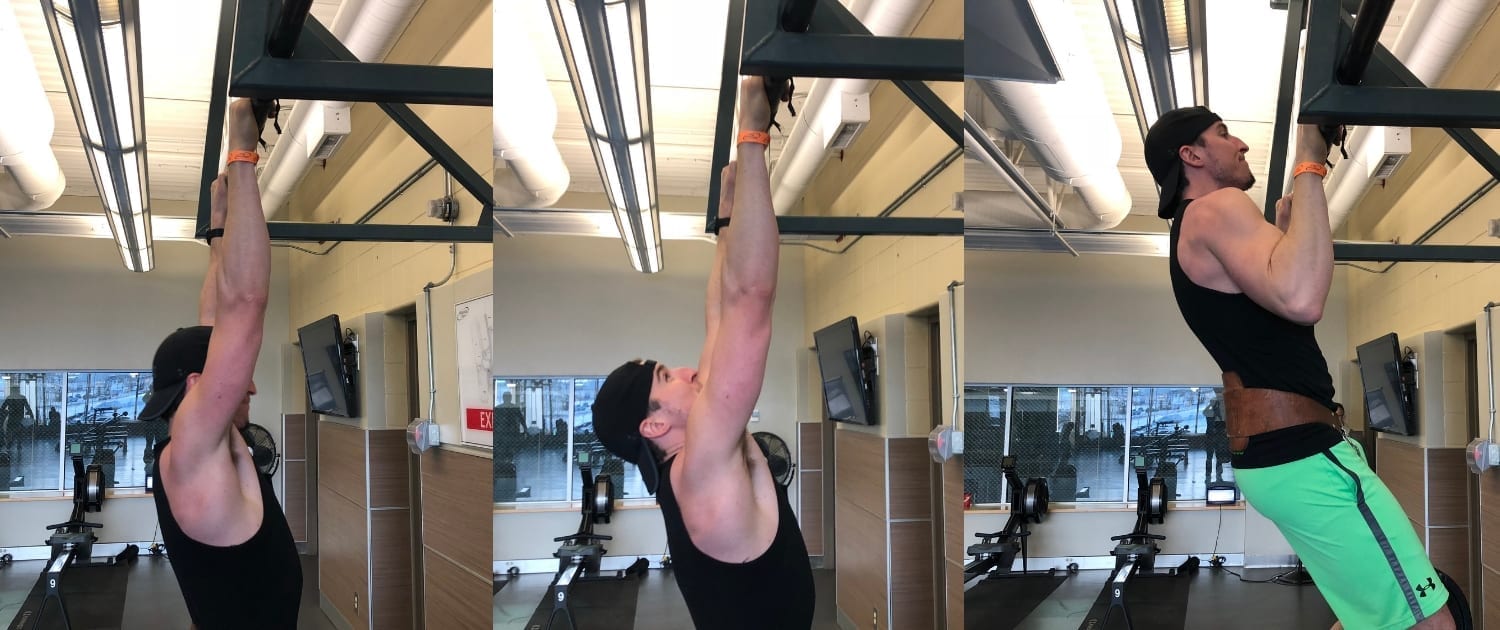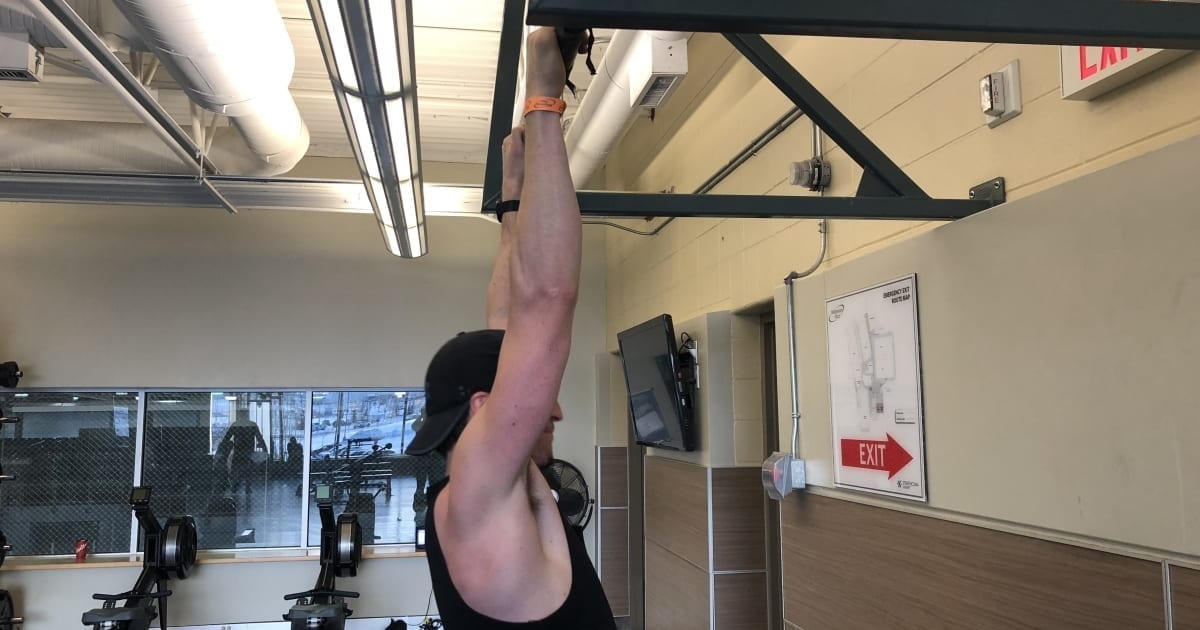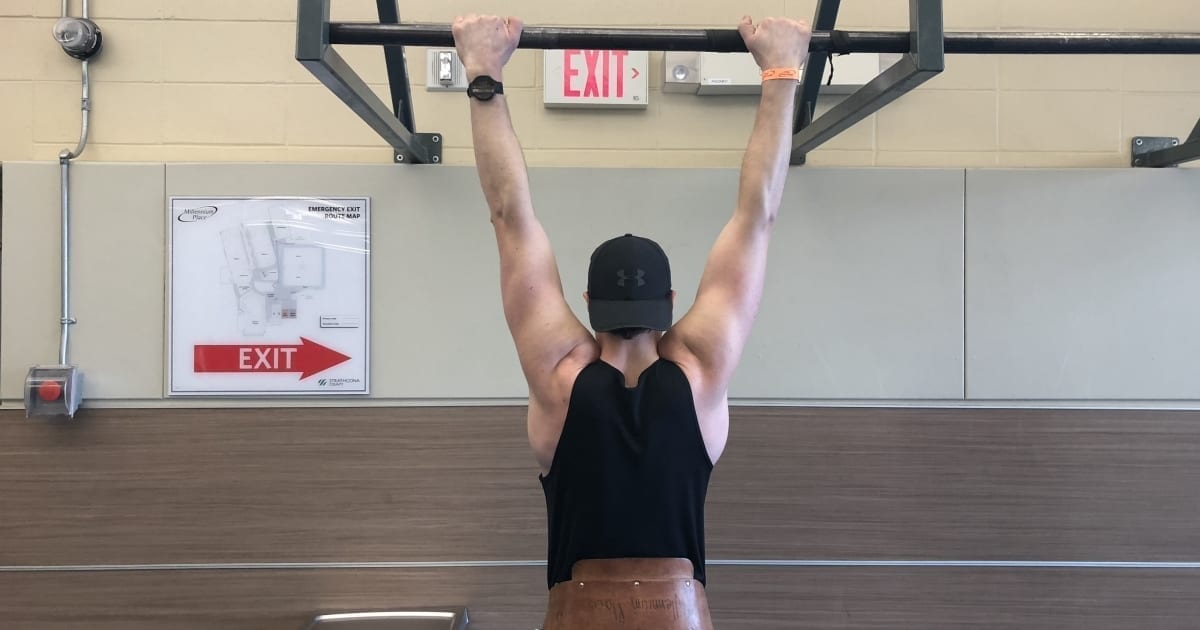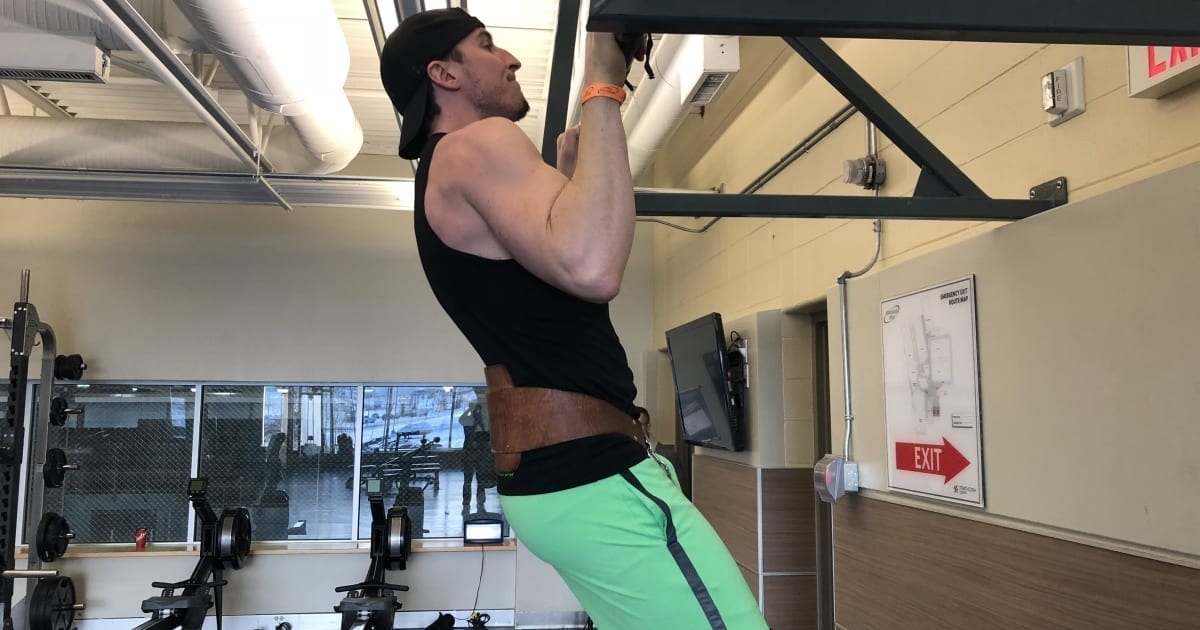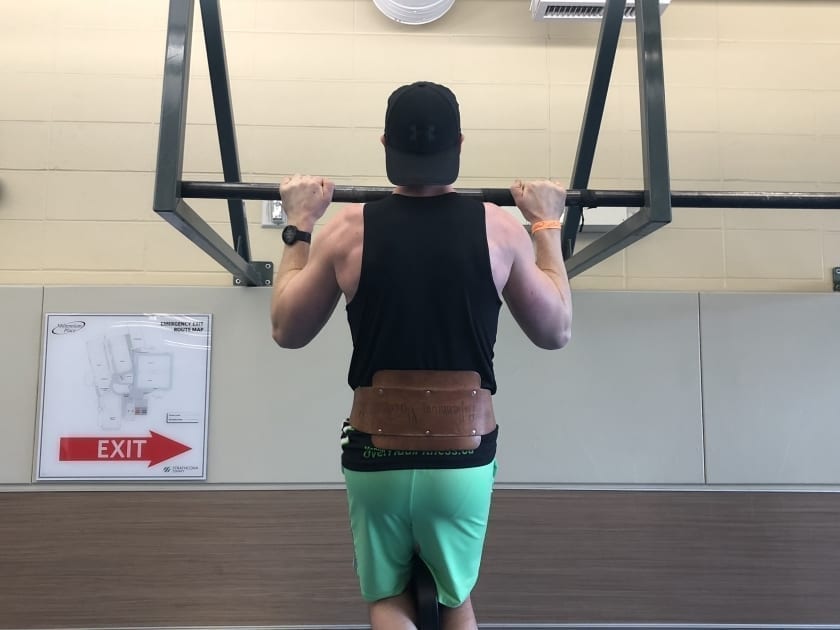Pull-ups: Why You Should Be Doing This Exercise, And How To Properly Do Them
Why? Well there are many reasons, to mention a few:
- They are one of the more challenging exercises and when you can pump out 10 quality reps (more on this later), you look pretty bad ass.
- They are a great compound exercise that is great for putting on muscle and/or being energy intensive for weight loss – whatever goal you are striving for. The pull-up works your:
- Upper-back: latissimus dorsi, traps, rear shoulders and other small muscles in your upper-back.
- Arms. biceps, forearms, triceps (pulls your elbows back towards your torso).
- Abs.
- They will help build a big and powerful back, giving you that “V-Taper” look, which is a great aesthetic look.
There are different versions of what some refer to as a pull-up, most are some different variation of the chin-up or pull-up. Both movements where you are pulling yourself upwards. The overhead pull-ups that I most commonly see in the gym are:
- Neutral close grip pull-up
- Overhand grip pull-up
- Underhand grip pull-up (a.k.a chin up, “chins”)
- Wide grip pull-up
There are a few more variations based on grip and hand width, but the above 4 variations in my opinion are the most common. For the remainder of this post I’m just going to focus on Overhand pull-ups; assume below, unless said otherwise, if I say pull-up I’m referring to this variation.
Let’s break down the technique a little bit here:
Grip: full grip, thumb underneath the bar. A big reason for this is to help prevent your elbows from flaring out to protect your shoulder. Think of “bending the bar” as you pull up.
Grip Width: shoulder width, or slightly outside shoulder – not too far though as that would be wide-grip pull-ups.
Starting position: start from a “dead-hang,” which means: you are free hanging from the bar, with straight arms straight over head (no elbow bend) and legs beneath you – or bent back behind you.
Start the pull up. Here are some things to think of during the pull-up:
- pull up by thinking about corkscrewing your hands and pulling your elbows down
- lead with your chest
- maintain the same length of your trunk (no bending or arching) throughout the movement. One way to help ensure this is to brace your core and contract your glutes (#datass)
- keep your shoulders “down and back.”
- In more scientific terms, “down” means shoulder depression (the opposite of shrugging, think of what happens when you’re doing heavy farmer carry’s; or doing a #onetripwonder grocery trip.) and “back” means retraction (shoulder blades slide back on your rib cage). If you can think of your shoulder blade like a little wing, or triangle, it’s going to rotate downards through the movement of the pull-up; then upwards on the lowering portion of the pull-up.
- keep your elbows tight to your body – typically at a 45 degree angle or closer; thinking of corkscrewing and bending the bar will help do this.
- Breathing: Inhale at the bottom, exhale as you pull yourself up.
Ending position: your head is above the bar, head neutral and not poking over top of the bar; see this video for a good example of this. A good visual I tell clients is this: if you imagine yourself doing a pull-up underneath a barbell, your ending position will be similar to the starting position of a barbell overhead press.
Lower yourself. Under control, lower yourself to the initial starting position.
Repeat.
So, can you do a proper pull up, starting with a dead-hang at the bottom and a nice controlled pause at the top? From my many years in gyms, it appears many can’t; at least not with good form.
Given that, how can one do more/get better at pull-ups, or even do one in the first place? Well, one obvious way is to start dong them – or variations of them (i.e. negatives) – more often. Even if that’s one a day, just work at it and look to increase the amount you do every week, week-to-week. Another way, especially if you can’t even do one pull-up is to is strengthen the muscles involved during the pull-up.
Those muscle, in order of most used (not to be read what generates most force), are:
- Latissimus dorsi (a.k.a. Michael Phelps “Wings”)
- Biceps brachi (Suns out, Guns out)
- Infraspinatus (Rottor Cuff muscle)
- Lower trapezius (Mid-back muscle)
- Pectoralis major (Your Mammary’s)
- Erector spinae (Your postural muscles)
- External oblique (Your side six-pack)
So, In order to do a Pull-up in the first place, you need to do exercises that strengthen the above muscles.
Here are some ways you can train for the pull-up, whether you can’t do any, or you can do 12:
- Seated pull downs. Seated pulldowns are especially good for those who can’t do a pull-up, you can do weight less than your bodyweight. There are many variations you can do based on grip width, but I’d stick with shoulder width grip first.
- Assisted Pull ups. You can do this a few ways:
- Use an assisted pull-up machine that has counter weight (the amount you select pushes you upwards).
- Resistance bands. Choke a resistance band over head and then use the opposite end for one of the following set-ups, listed from the least help to the most help: place one knee in the band, both knees, one foot, both feet.
- Assistance from pushing down on a chair/bench with one or two feet.
- knees bent kicking into a someone’s clasped hands.
- Negatives. Using a bench, or side rail, jump up and let yourself down slowly. Repeat.
- Added weight: Use a weight belt and add weight.
So what does a training plan look like to work on your pull ups? I’ve included a program that you could use below. Note that this is not a stand-alone program, rather you would incorporate this into an existing program.
9 Week Pull-Up Program
The following is for any pull-up variations, including pull-ups themselves (weighted too)
- Weeks 1-3: 2 workouts, that include a pull-up variation: 8 reps, 3 sets
- 6 sets total each week
- Weeks 4-6: 2 workouts, that include a pull-up variation: 8 reps, 4 sets
- 8 sets total each week
- Weeks 7-9: 2 workouts, that include a pull-up variation: 10 reps, 4 sets
- 8 sets total each week
In all of the above weeks, you want to look to increase the weight each time as you can, while maintaining proper technique. For the rep counts indicated, you should be picking weight/resistance that makes you do the indicated rep count. For example, in weeks 1-3 if you can do 15 bodyweight pull ups, then you need to add enough weight where you can then only do 10. And, for sets 2, 3 you want to continue to aim for 10 reps, even if that means you have to now remove the weight in order to do 10 pull-ups.
Week 10, take a break and then start the whole program over. Your “new” week 1-3 weights/resistance should be higher then your “first” week 1-3.
As mentioned earlier, is not a stand-alone program, rather it is an adjunct (to be done in addition) setup that you would incorporate this into an existing program. If you want a really comprehensive pull-up program, I would recommend Meghan Callaways’s Ultimate Pull-up Program.
I’ve listed some extra reading for any of you that want to know more:
If you have any questions, leave them in the comments sections below.
Till next time,
-Mike
 Author Bio: Michael Fouts
Author Bio: Michael Fouts
Mike blogs on this website – michaelfouts.com – obviously, but also owns a Mobile and Online Personal Training Company called OverHaul Fitness. Mike loves helping people manipulate their body composition; losing weight while retaining muscle, or putting muscle on while minimize fat gain. Mike’s spare time is spent being active (hockey, squash, triathlons), eating sandwiches or beef jerky, or watching thought provoking movies or tv series (like Westworld). Connect with Mike via email: Mike@overhaulfitness.ca, or Social Media – links below:
Like this blog post? Put your contact info below, and I’ll keep you updated when new blog posts are live.
You might also be interested in:

